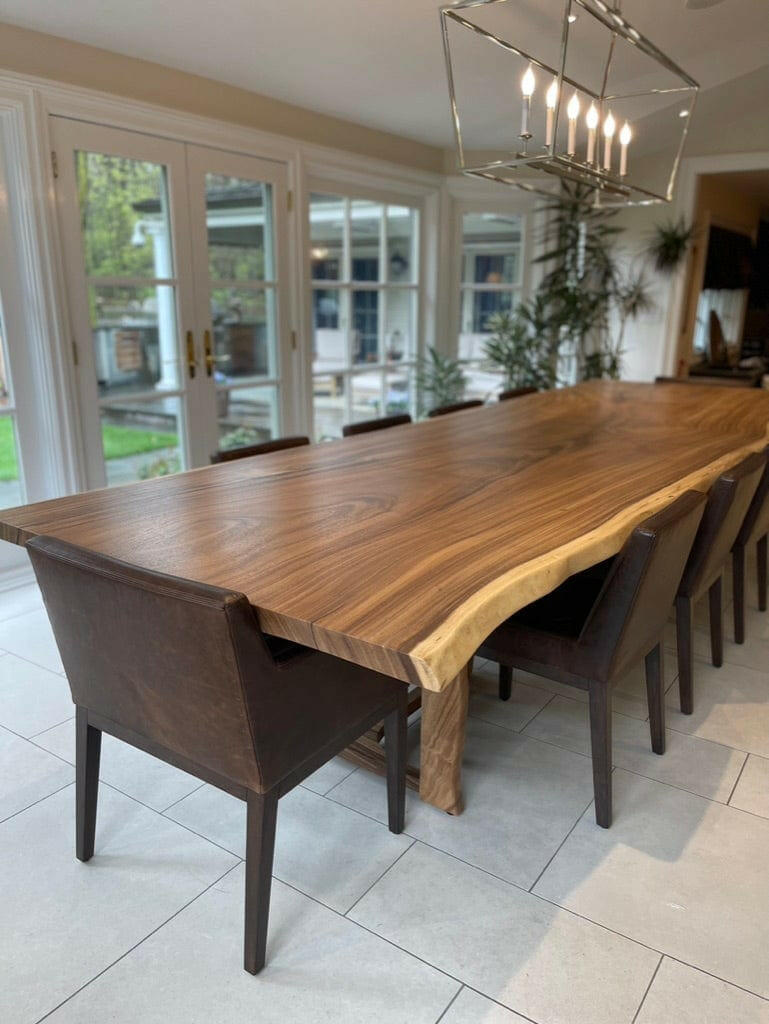Dining Room Table Legs That Incorporate Capability and Modern Layout
Dining Room Table Legs That Incorporate Capability and Modern Layout
Blog Article
An In-depth Consider Dining Table Leg Styles: Finding the Ideal Match
Picking the best eating table leg style is critical for both aesthetic charm and practical performance. For those with bigger tables, trestle legs guarantee tough support, whereas barrette legs present a mid-century modern ambiance with their minimal design. The x-shaped legs blend modern design with enhanced security.
Conventional 4 Legs
Amongst the numerous sorts of dining table leg styles, the conventional four-leg style continues to be a classic choice for several households. This classic setup uses an unified mix of capability and aesthetic appeals, making it a seasonal fave. 4 legs supply well balanced assistance, making sure the table continues to be secure and with the ability of birthing significant weight. This is specifically helpful for homes that often organize large events or utilize their dining table for numerous purposes, such as work or crafting.
From an aesthetic perspective, the traditional four-leg layout can be quickly adapted to various indoor designs. Whether crafted from wood, steel, or a mix of materials, these legs can be intricately sculpted, smooth and minimalistic, or anything in between. Their flexibility allows them to enhance both rustic and modern settings perfectly.
Moreover, the uncomplicated structure of the four-leg layout promotes simplicity of movement and positioning within a room. Unlike even more complicated bases, this design lessens obstructions, giving adequate legroom for diners. In recap, the traditional four-leg eating table leg style weds withstanding style with functional functionality, making it a sharp choice for those looking for both form and feature in their dining furnishings.
Stand Base
Often celebrated for its sophisticated and space-efficient layout, the pedestal base is a prominent option to the typical four-leg arrangement in dining table leg styles. Without corner legs, diners are paid for higher liberty of activity, making it an ideal choice for round and oval tables that promote more intimate and inclusive events.
The main column itself uses a canvas for detailed styles and artistic expressions, including a component of visual passion underneath the table. In summary, the stand base integrates functionality with design, making it a fine-tuned and practical alternative for diverse eating settings.
Trestle Legs
Trestle legs provide a robust and timeless structure for dining tables, defined by their horizontal cross-bracing and tough support light beams. Originating from middle ages times, this style has actually progressed yet retained its crucial structure, making it a seasonal favorite in both typical and contemporary setups. The central trestle beam of light, use this link often sustained by 2 or more upright posts, uses remarkable security, enabling larger table sizes without the need for extra legs.
A substantial advantage of trestle leg tables is the adequate legroom they offer. Unlike tables with four edge legs, the lack of obstructions at the table's edges supplies unimpeded space for chairs and restaurants, enhancing convenience and accessibility. This makes trestle tables optimal for suiting bigger gatherings, whether in a dining-room or a reception hall.
From rustic farmhouse to streamlined modern-day layouts, trestle legs can be tailored to match specific preferences. Their long-lasting allure and useful advantages make trestle legs an engaging selection for those looking for both design and functionality in their dining table.
Hairpin Legs

The charm of barrette legs lies in their simplicity and convenience - dining room table legs. Available in a variety of products, including steel and brass, they can be completed in countless colors to match various indoor styles. Whether coupled with a rustic wood table top or a modern glass surface, hairpin legs effortlessly mix capability with a touch of vintage charm
Toughness is another noteworthy function of barrette legs. Regardless of their fragile appearance, these legs are engineered to bear considerable weight, making sure the table continues to be stable and secure. Furthermore, they are fairly simple to set up, making them a preferred selection for do it yourself fanatics and specialist furnishings manufacturers alike.
X-Shaped Legs

Built from materials such as steel, wood, or a mix of both, X-shaped legs can be tailored to match different layout preferences. Steel legs commonly lend a smooth and commercial feel, suitable for loft-style homes and modern eating rooms. On the other hand, wooden X-shaped legs supply a warmer, more rustic charm, ideal for farmhouse or eclectic interiors. The adaptability in products allows property owners to customize their table to better fit their overall layout click here to find out more scheme.
Moreover, the engineering behind X-shaped legs guarantees even weight distribution, lessening the threat of tottering and boosting resilience. This makes them especially appropriate for larger dining tables that need extra support. Essentially, X-shaped legs blend functional design with contemporary aesthetics, making them a timeless option for diverse dining environments.
Conclusion
A comprehensive understanding of eating table leg styles reveals the distinctive attributes and benefits of each layout. Trestle legs make sure robust assistance for larger tables, and barrette legs present a mid-century modern visual.
Report this page